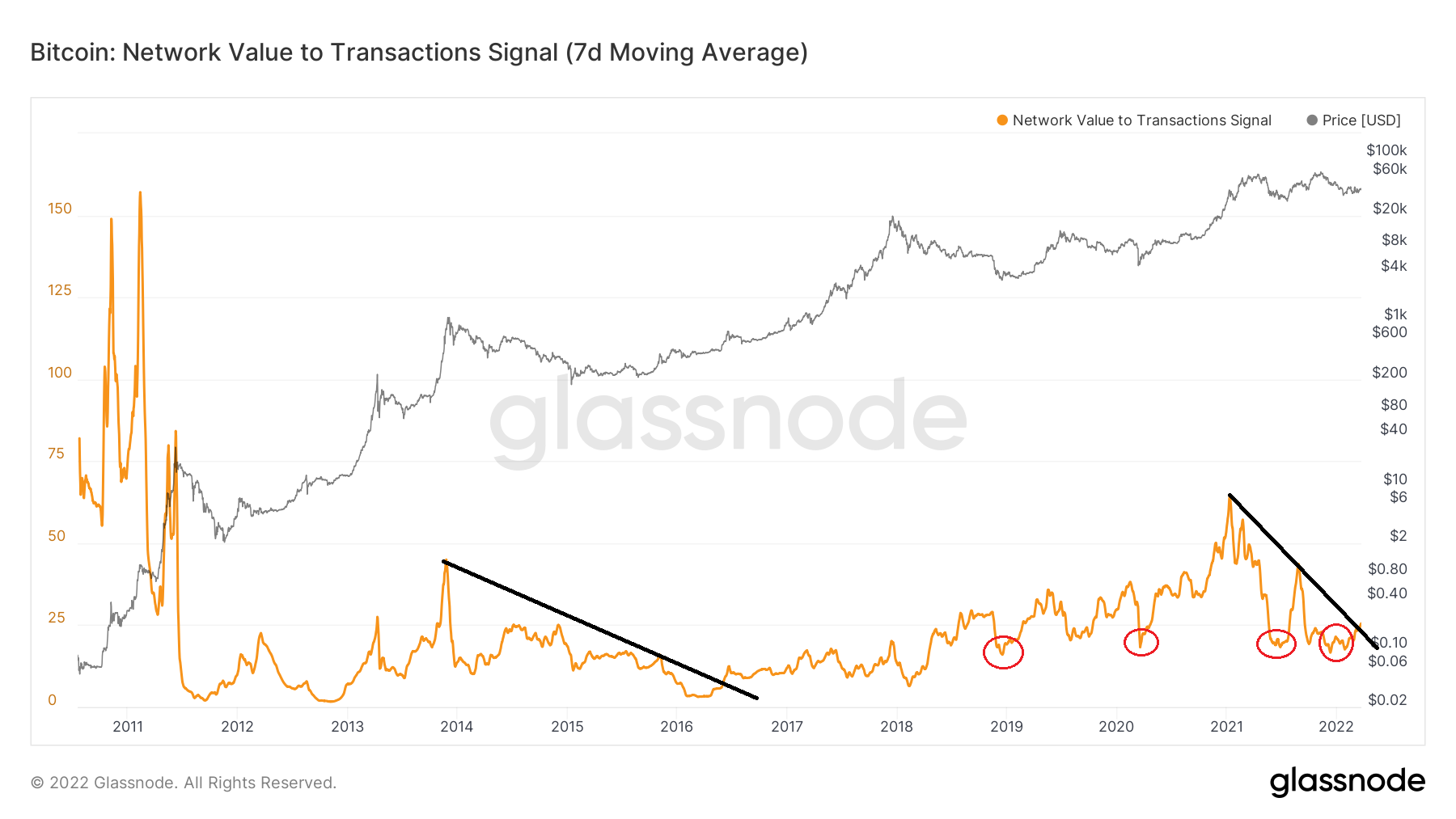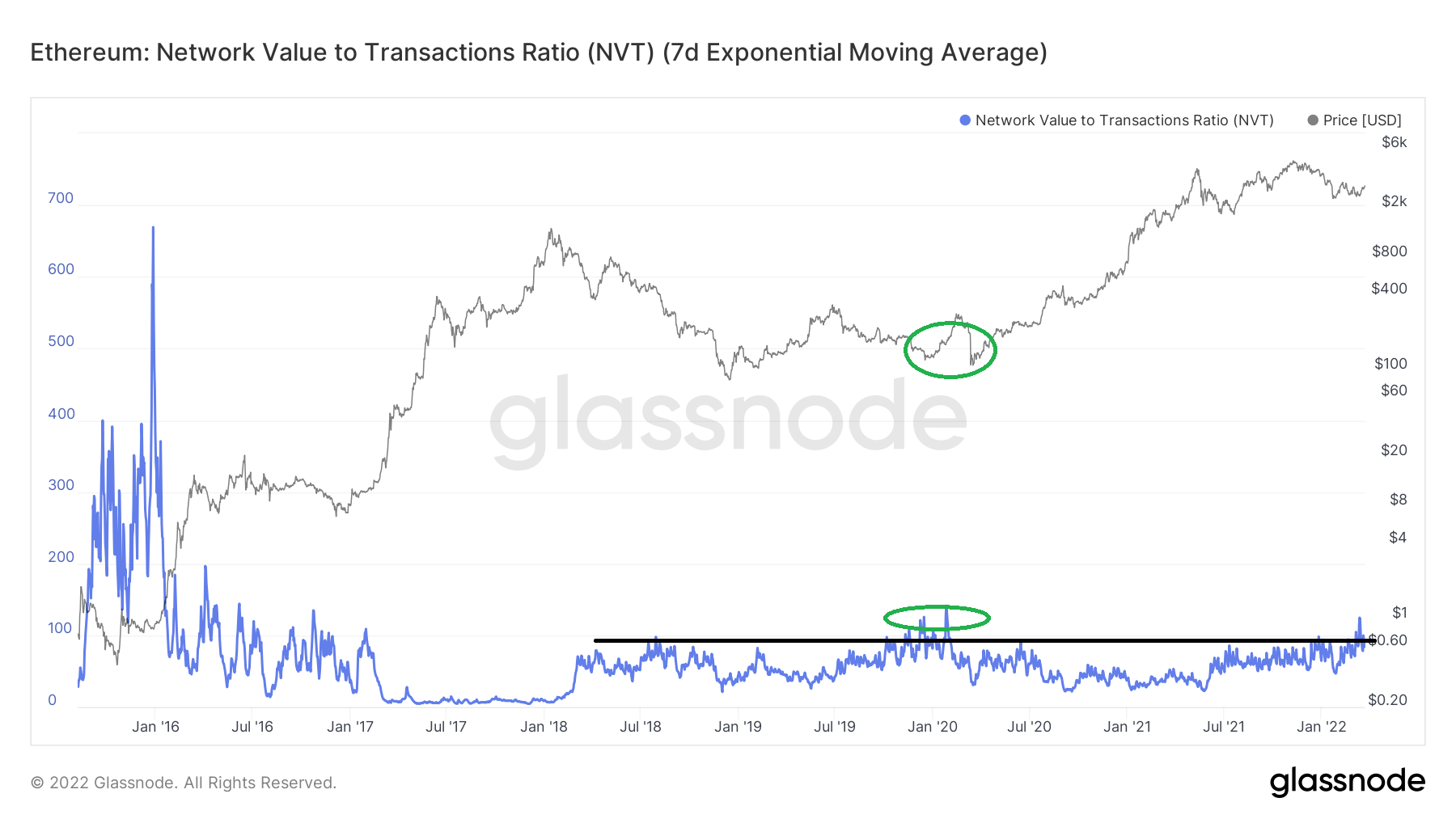Be[In]Crypto takes a look at on-chain indicators, more specifically the NVT (Network Value to Transaction) in order to determine if the Bitcoin (BTC) network is properly valued.
NVT is an on-chain indicator used to determine if a network is over or undervalued. It does this by dividing the market capitalization by transaction value. The indicator was created by Willy Woo.
SponsoredHigh values are a sign of overvaluation since they suggest that the increase in network value is not supported by an increase in transaction volume. However, while high values are considered bearish, lower values are not necessarily considered bearish. The reason for this is that low readings can indicate that there is no interest at all in the network.
For a more detailed analysis of NVT, click here
NVT signal
The NVT signal is a slightly adjusted indicator. It uses a 90-day moving average (MA) of the transaction volume instead of the raw data.
The most interesting development is the fact that the indicator has broken out from a descending resistance line. The previous time it did so was at the beginning of 2016, preceding a significant BTC price increase.
Furthermore, the breakout occurred after the indicator has reached a bottom, close to 19. The previous times such a value was reached (red circles) all led to significant upward movements.
SponsoredCurrently, the NVT signal is showing a value of 22.
Ethereum
In the case of Ethereum (ETH), NVT has been trading below 90 (black line) for the majority of its history.
The only significant deviation (green circle) occurred in March 2020, prior to the beginning of the current bull run.
ETH has broken out from the 90 level once more. Therefore, this could lead to an upward movement. However, the signal is not as clear as that in BTC.
For BeInCrypto’s latest Bitcoin (BTC) analysis, click here



